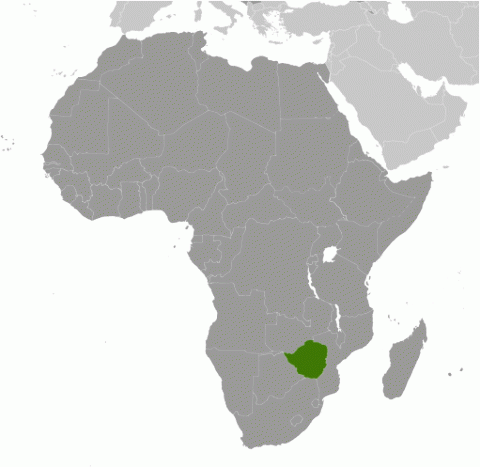Child Labor and Forced Labor Reports
Zimbabwe


Minimal Advancement
In 2024, Zimbabwe made minimal advancement in efforts to eliminate the worst forms of child labor. The government worked with the Tobacco Industry and Manufacturing Board to launch a pilot project to study child labor in tobacco and corn production. The National Steering Committee to Address the Worst Forms of Child Labor convened to discuss street children vulnerable to child labor. However, despite these efforts, the scope of existing social programs is inadequate to address child labor in all relevant sectors, including in agriculture, mining, and commercial sexual exploitation. In addition, critical social protection programs that reduce risks of child labor, including the Basic Education Assistance Module and the Harmonized Social Cash Transfer programs, did not receive budget allocations. Finally, law enforcement agencies lacked adequate personnel resources to enforce child labor laws.
| Children | Age | Percent and Population |
|---|---|---|
| Working | 5 to 14 | 14.8% (617,582) |
| Hazardous Work by Children | 15 to 17 | Unavailable |
| Attending School | 5 to 14 | 94.0% |
| Combining Work and School | 7 to 14 | 16.0% |
| Sectory/Industry | Percent of Population |
|---|---|
| Agriculture | 96.7% |
| Industry | 0.8% |
| Services | 2.5% |
| Sector/Industry | Activity |
|---|---|
| Agriculture | Farming, including in the production of tobacco and sugarcane; fishing; and forestry. |
| Industry | Lithium mining and gold mining and panning, using dangerous chemicals such as cyanide and mercury, and extracting material from underground passages and quarries.† |
| Services | Street work, including vending and begging; domestic work. |
| Categorical Worst Forms of Child Labor‡ | Commercial sexual exploitation, sometimes as a result of human trafficking; use in illicit activities, including selling of drugs; and forced labor in mining, domestic work, and agriculture, including herding. |
† Determined by national law or regulation as hazardous and, as such, relevant to Article 3(d) of ILO C. 182.
‡ Child labor understood as the worst forms of child labor per se under Article 3(a)–(c) of ILO C. 182.
Children at Higher Risk
Sharp divisions in income, resources, and quality of life between rural and urban areas likely contribute to increased vulnerabilities of rural children to labor exploitation. Research indicates human traffickers target children from Mozambique, Malawi, Somalia, and the Democratic Republic of Congo for labor exploitation in urban centers and marketplaces. Traffickers also exploit children with disabilities in forced begging. Rural households dependent on agriculture are likewise vulnerable to drought and crop failure, all of which further strain their economic security. In 2024, a severe drought affecting roughly half of the population, including 3.5 million children, decimated agriculture, increasing food insecurity and resulting in many children leaving school.
Barriers to Education Access
Research indicates some children in Zimbabwe face continued challenges related to birth registration and acquisition of national identification documents. Children without birth registration face barriers to education because children in grades seven and up must present identity documents to take national exams. In addition, school fee requirements; poor school infrastructure, including lack of water and hygiene facilities; too few teachers; language barriers within schools; and long travel distances to reach schools may contribute to higher dropout rates and vulnerability to child labor, particularly in rural areas. Lack of access to feminine hygiene products and stigma against girls who were pregnant or mothers also contributed to educational access challenges among girls.
| Standard | Age | Meets International Standards | Legislation |
|---|---|---|---|
| Minimum Age for Work | 16 | ✓ | Section 11 of the Labor Act; Section 10A of the Children's Act |
| Minimum Age for Hazardous Work | 18 | ✓ | Section 11.4 of the Labor Act; Section 10A(4) of the Children's Act |
| Identification of Hazardous Occupations or Activities Prohibited for Children | ✓ | Section 3.1 of the Labor Relations (Employment of Children and Young Persons) Regulations; Section 2 of the Children's Act | |
| Prohibition of Slavery, Debt Bondage, and Forced Labor | ✗ | Sections 54 and 55 of the Constitution; Sections 2 and 4A of the Labor Act; First Schedule (Section 3) and Sections 2 and 3 of the Trafficking in Persons Act | |
| Prohibition of Child Trafficking | ✗ | First Schedule (Section 3) and Sections 2 and 3 of the Trafficking in Persons Act | |
| Prohibition of Commercial Sexual Exploitation of Children | ✗ | Sections 61, 83, and 87 of the Criminal Law Act; Sections 2, 8, and 10 of the Children’s Act; First Schedule (Section 3) and Sections 2 and 3 of the Trafficking in Persons Act | |
| Prohibition of Using Children in Illicit Activities | ✗ | Section 156 of the Criminal Law Act; Section 10 of the Children’s Act | |
| Minimum Age for Voluntary State Military Recruitment | 16 | ✓ | Sections 5, 9, and 10 of the National Service Act |
| Prohibition of Compulsory Recruitment of Children by (State) Military | ✓ | Section 9 of the National Service Act | |
| Prohibition of Military Recruitment by Non-state Armed Groups | ✗ | ||
| Compulsory Education Age | 16‡ | ✓ | Sections 2 and 5 of the Education Act |
| Free Public Education | ✗ | Section 75 of the Constitution; Sections 5, 6, and 13 of the Education Act |
‡ Age calculated based on available information
Zimbabwe does not adequately criminalize the use of a child for prostitution or the use, offering, and procurement of a child for the production of pornography and pornographic performances. Further, Zimbabwe does not adequately criminalize child trafficking because the law requires a child's physical movement in order to prosecute for child trafficking. Laws prohibiting forced labor are insufficient as they do not criminalize slavery. Moreover, the law does not provide increased penalties or a separate crime for the use, procuring, and offering of children for both the production and trafficking of drugs. In addition, although the Education Act establishes children's right to state-funded education up to age 16, the law maintains the Minister of Education's ability to institute instructional fees.
| Organization/Agency | Role & Activities |
|---|
| Ministry of Public Service, Labor, and Social Welfare (MPSLSW): Enforces labor and anti-human trafficking laws and investigates labor-related complaints, including those involving child labor. In addition to its designated labor inspectors, MPSLSW coordinates with Occupational Health and Safety inspectors, National Employment Council representatives, and inspectors from the Ministry of Mines to identify and remove children from child labor. Also conducts industry- and sectoral-based labor inspections through appointed agents of national employment councils, comprising employers' association and trade union representatives. In 2024, MPSLSW worked with the Coalition Against Child Labor in Zimbabwe, the Tobacco Industry and Manufacturing Board, and the NGO Eliminating Child Labor in Tobacco Growing Foundation to identify hazardous work activities that should be prohibited for children. |
| Zimbabwe Republic Police: Enforce laws related to the worst forms of child labor in conjunction with MPSLSW, the judiciary, and the Ministry of Justice, Legal, and Parliamentary Affairs. |
| Overview of Enforcement Efforts | 2024 |
|---|---|
| Has a Labor Inspectorate | Yes |
| Able to Assess Civil Penalties | No |
| Routinely Conducted Worksite Inspections | Yes |
| Unannounced Inspections Permitted | Yes |
| Has a Complaint Mechanism | Yes |
| Imposed Penalties for Child Labor Violations | Unknown |
| Conducted Criminal Investigations for Worst Forms of Child Labor Crimes | Unknown |
| Imposed Penalties for Worst Forms of Child Labor Crimes | Unknown |
It is unknown how many labor inspectors conducted worksite inspections, or whether child labor violations were found. It is also unknown whether investigations into suspected cases of the worst forms of child labor were conducted, prosecutions were initiated, or perpetrators were convicted.
| Coordinating Body | Role & Activities |
|---|
| National Steering Committee to Address the Worst Forms of Child Labor: Coordinates government efforts to address the worst forms of child labor. Chaired by MPSLSW and includes the Ministries of Health and Child Care; Primary and Secondary Education; and Youth Development, Indigenization, and Economic Empowerment. In 2024, the National Steering Committee convened to discuss the situation of children involved in street work. |
Research found no evidence that Zimbabwe established policies to address child labor.
| Program | Description & Activities |
|---|
| Harmonized Social Cash Transfer:‡ National unconditional cash transfer program to assist labor-constrained and food-insecure households to avert harmful coping strategies, such as child labor. Research indicates that in 2024, a termination of donor funding meant that the government could not continue this program. |
| Basic Education Assistance Module:‡ Government program that provides basic financial assistance to families for education, such as tuition and exam fees. Aims to enroll and keep children in school. Civil society reports suggest that the government last funded this program in 2022. |
‡ Program is funded by the Government of Zimbabwe.
| Area | Suggested Action |
|---|---|
| Legal Framework | Ensure that the law criminally prohibits the recruitment of children under age 18 by non-state armed groups. |
| Ensure that the law criminalizes the use of a child for prostitution and the use, offering, and procurement of a child for the production of pornography and pornographic performances. | |
| Ensure that the laws do not require physical movement of a child in order to criminalize and prosecute for child trafficking. | |
| Ensure that laws prohibiting forced labor criminalize slavery. | |
| Establish, by law, free basic education by removing the Minister of Education's ability to impose discretionary school fees. | |
| Ensure that laws provide increased penalties or a separate crime for the use, procuring, and offering of children for both the production and trafficking of drugs. | |
| Enforcement | Establish a mechanism to assess civil penalties for child labor violations. |
| Increase operational resources, including vehicles and equipment, and the number of labor inspectors to 406 (for a labor force of 6,095,000 people) to address labor violations and enforce minimum age protections in all sectors, including agriculture and artisanal mining. | |
| Conduct targeted inspections in priority sectors in which child labor is known to occur, including tobacco farms and informal mining sites, and publish information on whether unannounced inspections were conducted. | |
| Publish data on the government's labor law enforcement efforts, including the number of child labor violations found, penalties imposed for child labor violations, penalties imposed that were collected, and any trainings conducted, including trainings for labor inspectors on indications of child labor. | |
| Implement a digital tracking system for civil worst forms of child labor inspections. | |
| Publish information on the government's criminal law enforcement efforts, including the number of investigations, prosecutions initiated, convictions, and whether the government imposed penalties. | |
| Ensure that trained criminal law enforcement officials consistently use the National Referral Mechanism to identify trafficking victims, including children. | |
| Government Policies | Establish policies to address child labor. |
| Social Programs | Improve access to education by ensuring that all children are registered at birth and providing children with identity documents so they may take secondary school examinations. |
| Remove barriers to education access for children in rural areas by improving access to water and hygiene facilities within schools, reducing travel distances to schools, addressing language barriers in instruction, and employing more teachers. | |
| Fund social protection programs, including the Basic Education Assistance Module and the Harmonized Social Cash Transfer programs, to reach the most vulnerable children and families. | |
| Expand social programs to address child labor, especially child labor in agriculture, commercial sexual exploitation, and mining. |





